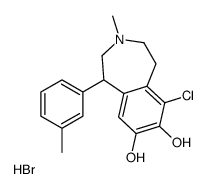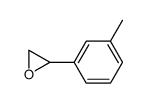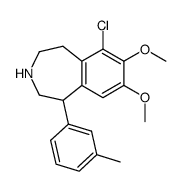67287-95-0
| Name | 6-Chloro-3-methyl-1-(3-methylphenyl)-2,3,4,5-tetrahydro-1H-3-benz azepine-7,8-diol hydrobromide (1:1) |
|---|---|
| Synonyms |
6-chloro-9H-purine-2-sulfonyl fluoride
2-fluorosulfonyl-6-chloropurine 6-chloranyl-7H-purine-2-sulfonyl fluoride 6-Chlor-purin-2-sulfonylfluorid 6-Chloro-1H-Purine-2-sulfonyl fluoride |
| Description | SKF83959 hydrobromide is a potent and selective dopamine D1-like receptor partial agonist. SKF83959 hydrobromide Ki values for rat D1, D5, D2 and D3 receptors are 1.18, 7.56, 920 and 399 nM, respectively. SKF83959 hydrobromide is a potent allosteric modulator of sigma (σ)-1 receptor. SKF83959 hydrobromide belongs to benzazepine family and has improvements on cognitive dysfunction. SKF83959 hydrobromide can be used for the research of Alzheimer's disease and depression[1][2][3][4]. |
|---|---|
| Related Catalog | |
| Target |
D1 Receptor:1.18 nM (Ki) D5 Receptor:7.56 nM (Ki) D2 Receptor:920 nM (Ki) D3 Receptor:399 nM (Ki) sigma (σ)-1 |
| In Vitro | SKF83959 hydrobromide (10~250 μM) stimulates PIP2 hydrolysis in membranes. SKF83959 hydrobromide (0.1~10 μM; PC12 cell) changes the EC50 value of SKF81297 from 0.5 nM in control tissue to 31.6 nM, 251.2 nM and 631.0 nM[2]. |
| In Vivo | SKF83959 hydrobromide (0.5 and 1 mg/kg; i.p.; 1 hour) reverses the scopolamine-induced cognitive impairments in the passive avoidance task and Y-Maze test[1]. SKF83959 hydrobromide (1 mg/kg; i.p.; 30 minutes) induced memory enhancing effects are prevented by brain-derived neurotrophic factor system blockade[1]. SKF83959 hydrobromide has anti-amnesic activities and restores the scopolamine-decreased BDNF signaling pathway in the hippocampus in mice[1]. Animal Model: Male ICR male mice (8 weeks)[1] Dosage: 0.5 and 1 mg/kg Administration: I.p.; 1 hour Result: Reversed the scopolamine-induced cognitive impairments in the passive avoidance task and Y-Maze test. Animal Model: Male ICR male mice (8 weeks)[1] Dosage: 1 mg/kg Administration: I.p.; 30 minutes Result: The memory enhancing effects were prevented by BDNF system blockade. |
| References |
| Molecular Formula | C18H21BrClNO2 |
|---|---|
| Molecular Weight | 398.72200 |
| Exact Mass | 397.04400 |
| PSA | 43.70000 |
| LogP | 4.57540 |
| WGK Germany | 3 |
|---|






